Florida’s Space Coast is seeing continued activity behind the scenes to prepare for upcoming flights of New Glenn, Stoke Space’s Nova, ULA’s Atlas V and the resumption of SpaceX Falcon 9 launches.
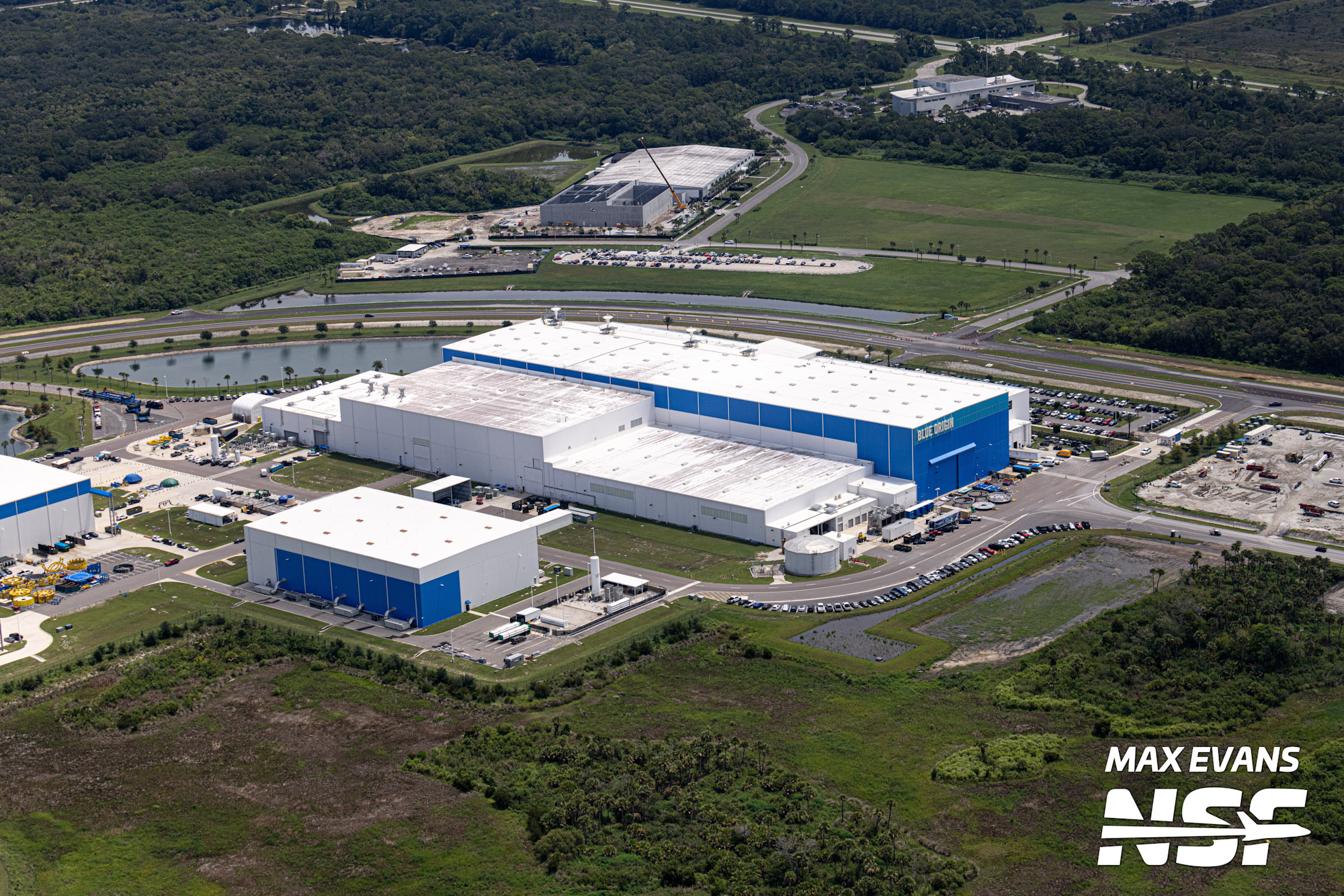
Exploration Park during the July 12 flyby. The Blue Origin campus dominates the scene, but the Airbus/OneWeb factory is in the background. (Credit: Max Evans for NSF/L2)
Blue Origin
As NASA’s New Glenn and its Mars-bound EscaPADE payload are being prepared for launch no earlier than September 29, 2024, significant activity has been taking place at Launch Complex 36 (LC-36) at Cape Canaveral Space Force Station.
Earlier this month, the New Glenn transporter-erector (TE) was tested as part of flight preparations, and the New Glenn simulator stood on the pad for the first time without the TE. The tests involved varying degrees of retraction of the rocket and rapid retraction during launch, presumably similar to the TE assemblies on SpaceX’s Falcon family in Florida.
In addition to the engineering test work, a first stage engine section test element is also located near the pad, while the second stage engineering test has been moved from its storage position for possible use in stage testing prior to integration and flight. A second stage equipped with two BE-3U engines was seen in the factory, after being shown off by Blue Origin CEO Dave Limp in a photo.
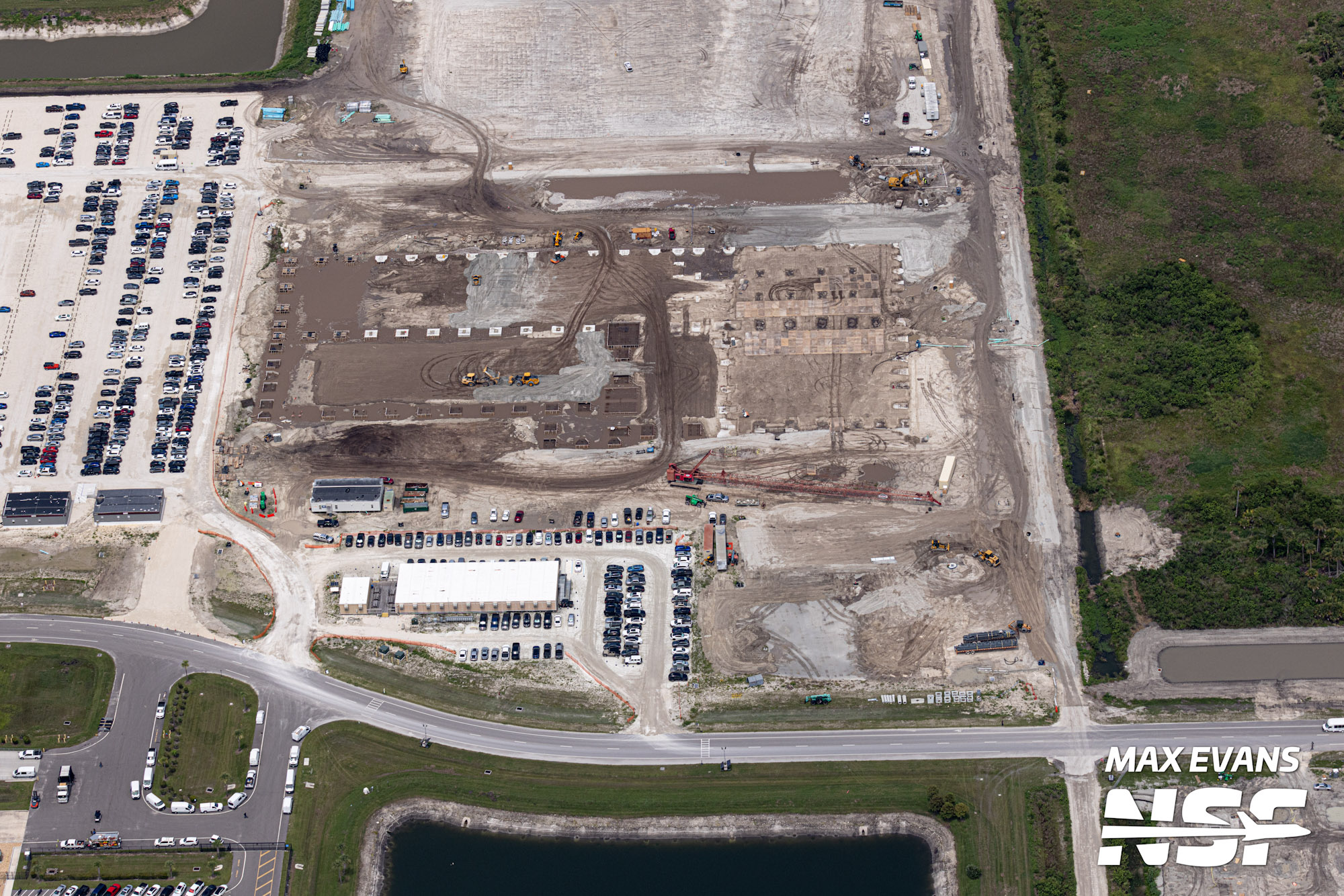
This is where the foundations of Lunar Plant 1 are laid. (Credit: Max Evans for NSF/L2)
Near the entrance to LC-36, the historic Hangar O is set to be replaced, and the company has filed a permit application to demolish the building. The existing 8,000-square-foot facility is to be replaced with a new 9,000-square-foot hangar and dry retention pond. It is not yet clear what the new facility will be used for.
While work is underway on LC-36, Blue Origin has also been laying the foundation for its Lunar Production Facility, also known as Lunar Plant 1, which will manufacture hardware for the Artemis lunar landing program. Test hardware for the “Blue Moon” lander was also recently spotted.
Other works are also underway at Exploration Park, such as a new car park to accommodate a large number of employees and contractors expected to work on various Blue projects in Cape Town.
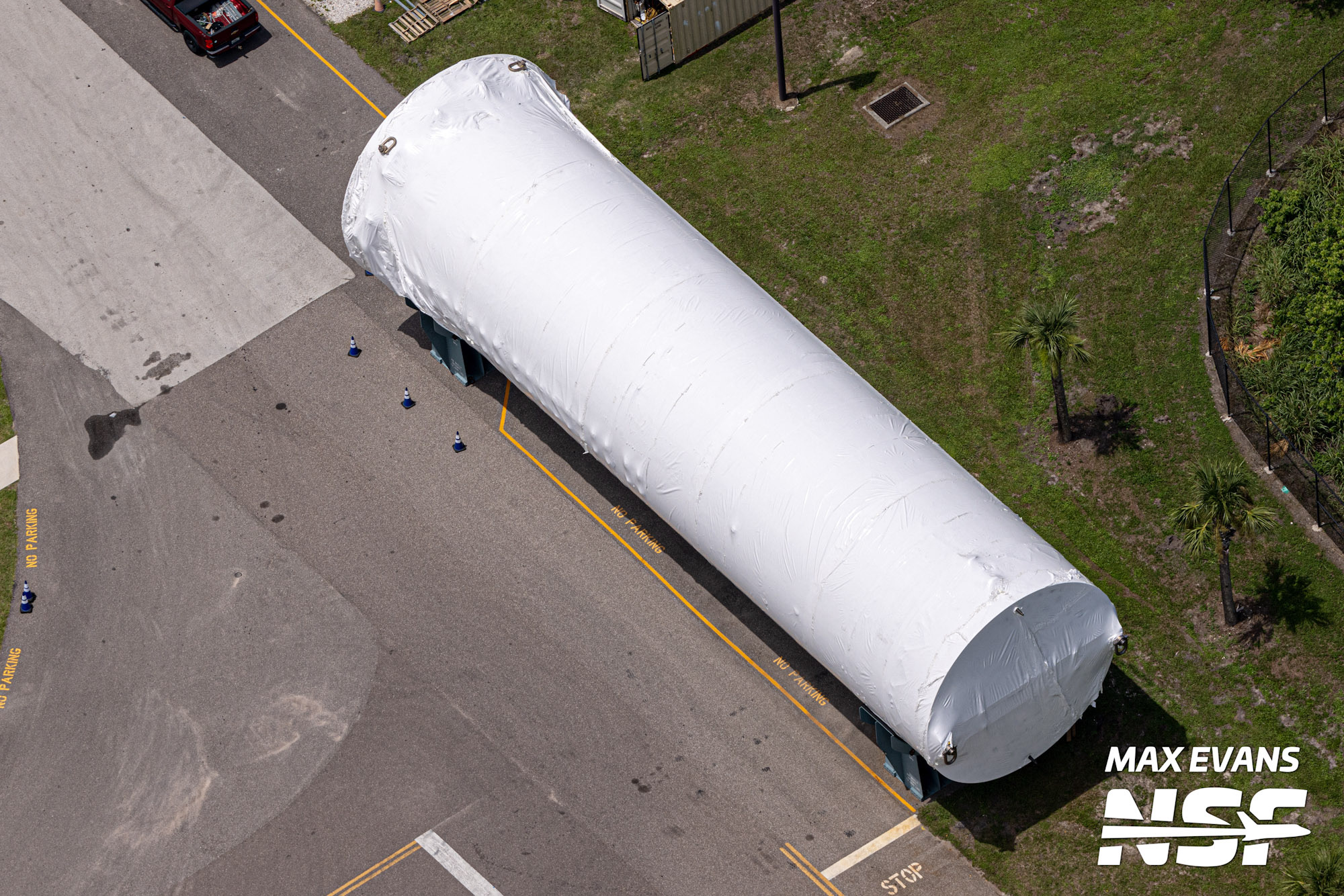
A possible New Glenn stage simulator seen during the July 12 flyby. (Credit: Max Evans for NSF/L2)
Two transport platforms have been spotted at Exploration Park, one of which is expected to be used to transport New Glenn’s second stage to LC-36 before its pre-flight tests. New Glenn’s first stage is also expected to be in motion soon and its seven BE-4 engines may be installed.
Blue Origin has also been preparing for New Glenn’s next flights at sea. New Glenn’s first stage is designed to be recovered and reused, and a landing attempt could occur on its first flight.
The Harvey Stone vessel will serve as the company’s recovery and support vessel, while the 115-metre-long, 45-metre-wide Landing Platform Vessel 1 barge will serve as the landing site for the first stage of the New Glenn. Both vessels are currently in France but are expected to return to Florida in the near future.
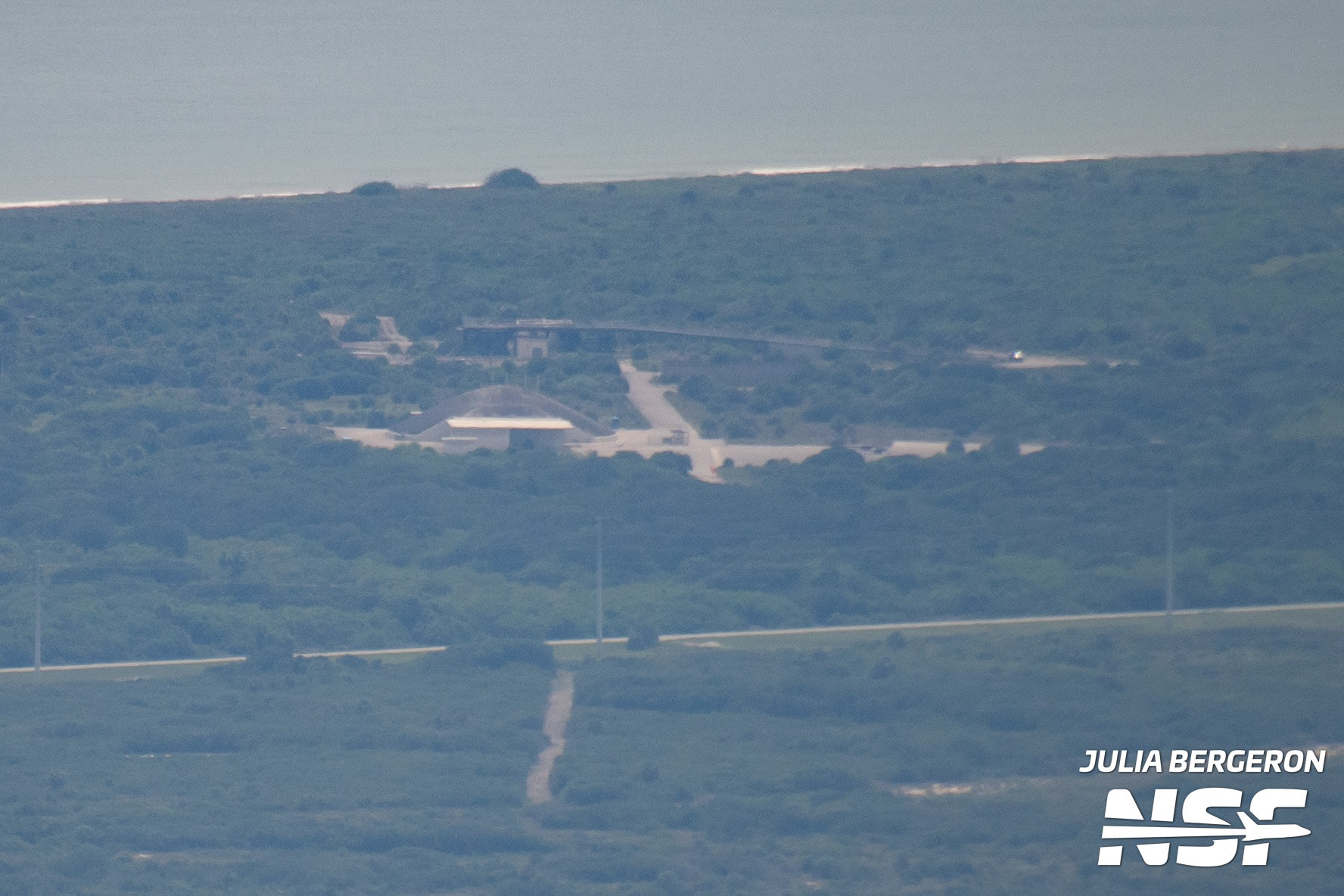
Stoke Space’s LC-14 seen here during the flyby. (Credit: Julia Bergeron for NSF/L2)
Stoke Space
Stoke Space is developing a fully reusable medium-sized launch vehicle called Nova, which is expected to make its first flight next year. The Nova vehicle is scheduled to launch from Launch Complex 14 (LC-14) — the same platform that hosted Mercury-Atlas launches, including Friendship 7the flight that made astronaut John Glenn the first American in orbit.
Following an environmental assessment of the site, a Notice of No Significant Impact (FONSI) was issued by the U.S. Space Force in May 2024. A nearly 700-page environmental assessment document containing extensive details about the Nova vehicle and its operations was released along with the FONSI.
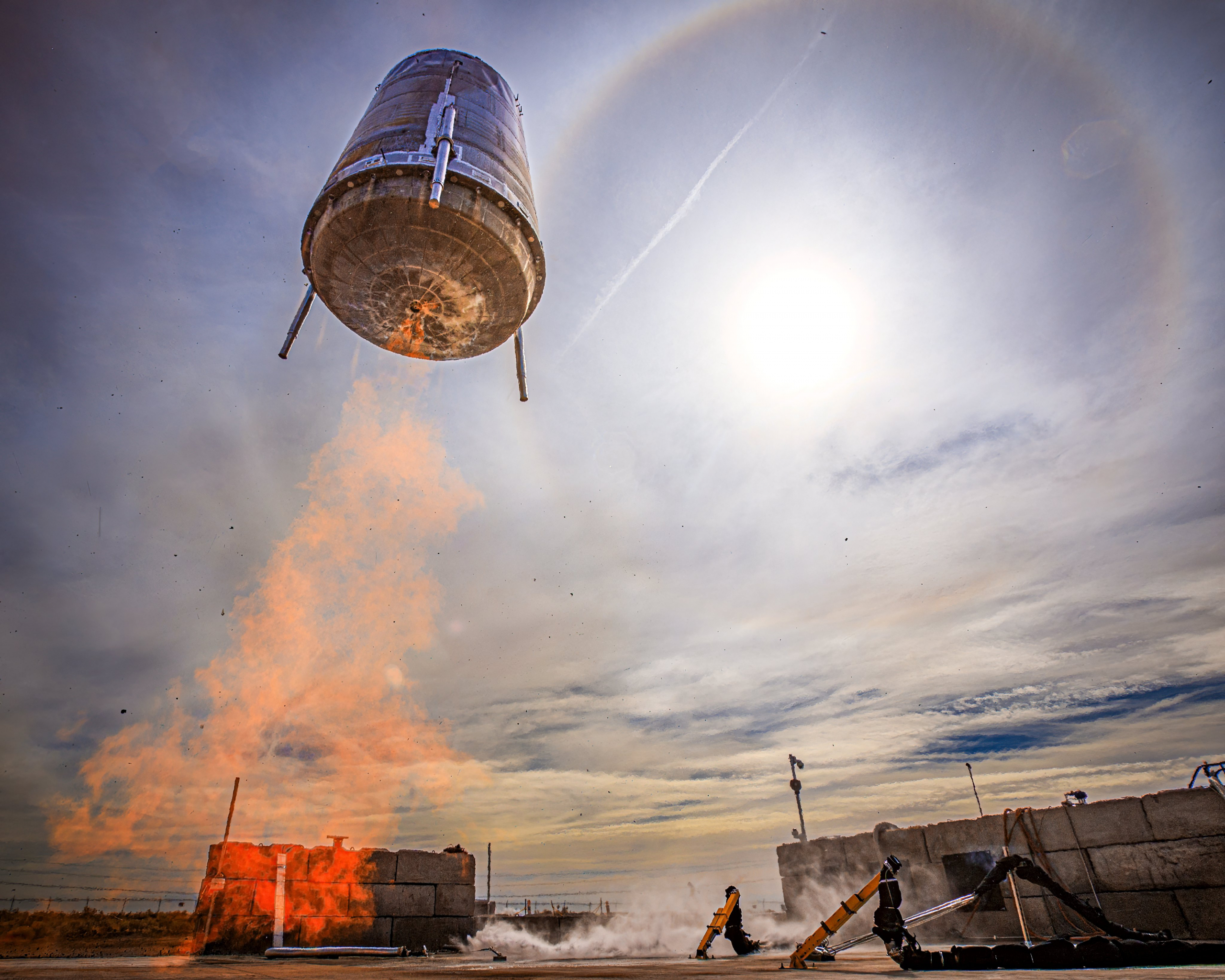
Hopper 2 flies into a mixture of fire and ice. (Credit: Stoke Space)
Stoke Space has now started settling on LC-14 and the company plans to build a horizontal integration building with a payload integration facility attached to it. Nova will use Falcon TE family vehicles, which will be deployed horizontally on the pad before being erected.
A set of lightning protection catenary pylons will be built, as well as a water tower for a deluge system and storage tanks for helium and nitrogen. Tanks for liquid and gaseous oxygen, hydrogen and natural gas will also be provided, as these are the propellants used by the Nova vehicle elements.
Nova’s first two flights are scheduled for 2025, with 10 flights planned for 2026 and 2027. Nova’s first flights will be expendable, with full reuse of the first and second stages coming later. This is similar to the Falcon 9’s path to partial reuse to become part of the system, with nearly seven years between the Falcon 9’s first flight and its first reuse.
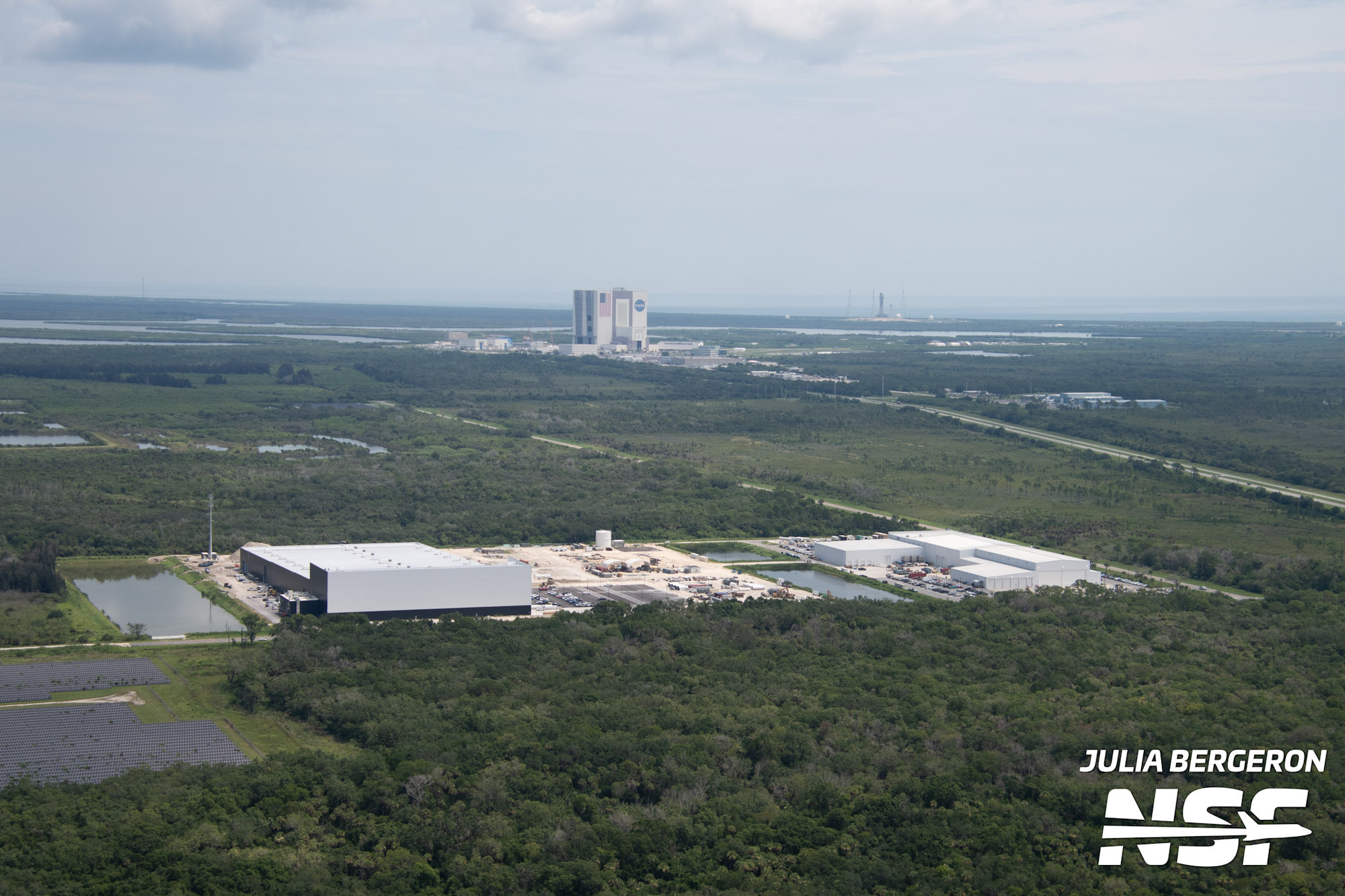
The SpaceX Roberts Road facility with the Kennedy Space Center’s iconic VAB in the background. (Julia Bergeron for NSF/L2)
SpaceX
Despite the current Falcon 9 grounding, work continues at the company’s Roberts Road site, including the repurposing of Pad 39A for single-stick Falcon 9 operations following the Falcon Heavy GOES-U launch. Testing of equipment to power Intuitive Machines’ spacecraft has also been completed recently.
Space Launch Complex-40, the world’s busiest launch pad, is temporarily out of use due to the Falcon 9 flights being paused, but a new set of tanks and vaporizers has been spotted there. Pad 39A has new liquid oxygen tanks, while no new work has been seen on the launch tower and the Starship launch pad installation.
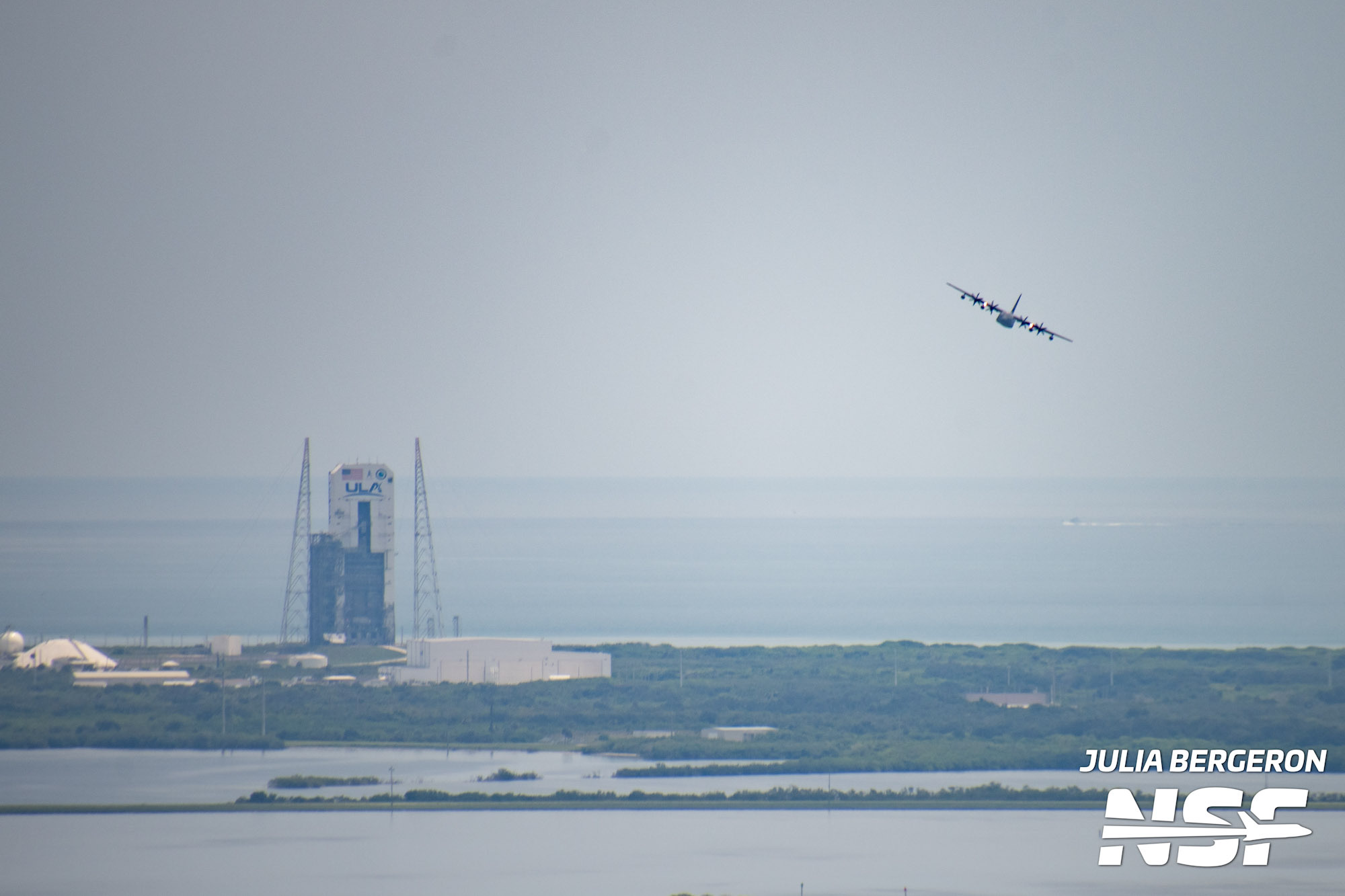
A C-130 Hercules flying next to SLC-37 at Cape Canaveral Space Force Station. (Julia Bergeron for NSF/L2)
Up to 44 Starship missions per year are planned to be flown from Pad 39A, in addition to 25 Starship missions per year from Starbase. Space Launch Complex 37 is also planned to be used for Starship launches, up to 76 times per year. The old ULA complex looks much as it did after the last Delta 4 Heavy left, although a new clearing to the west of this complex has been spotted. It is not yet known whether this clearing is related to Starship activity.
SpaceX is currently focusing its efforts on its Starbase in Texas, but in the future it will build a new capture tower, an air separation unit, and a natural gas liquefaction plant. A quick disconnect arm for the launch tower is still present at the Roberts Road base, but it may now be obsolete.
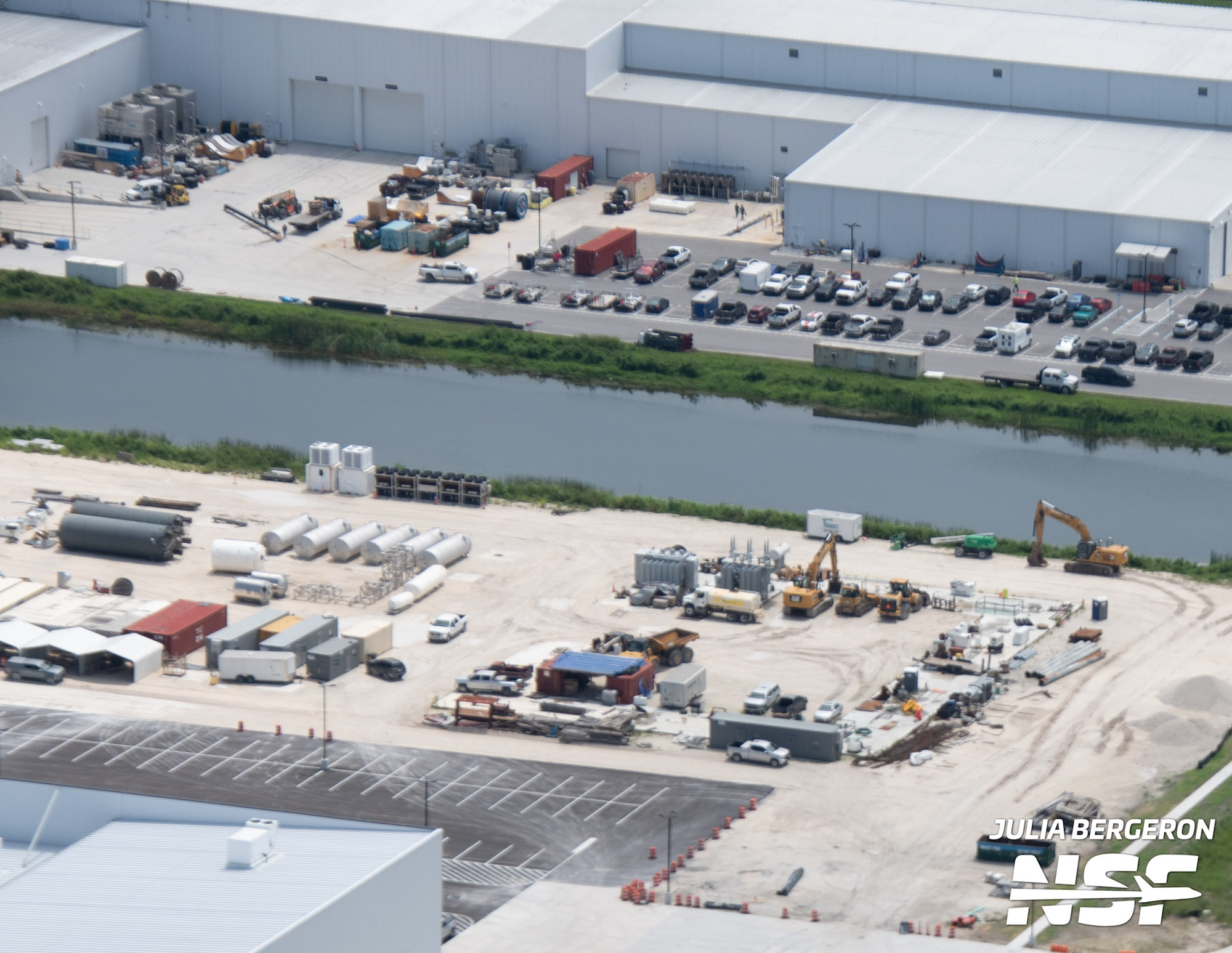
Elements of Starbase’s former suborbital tank farm are visible at the Roberts Road facility. (Credit: Julia Bergeron for NSF/L2)
Elements of Starbase’s suborbital tank farm were also seen at the Roberts Road facility, indicating a two-way exchange of equipment between the company’s Florida and Texas facilities. No elements of the launch tower remain at Roberts Road; the modules that would make up a new launch tower are now all in Texas.
A new parking lot has been built next to HangarX2 to accommodate workers, and the facility is being used for processing Dragons. A Cargo Dragon – possibly C209 – has been seen moving towards HangarX2, while a Crew Dragon – possibly ResilienceThe vehicle that will be used for the Polaris Dawn mission was seen moving from Roberts Road to another hangar for launch preparations.
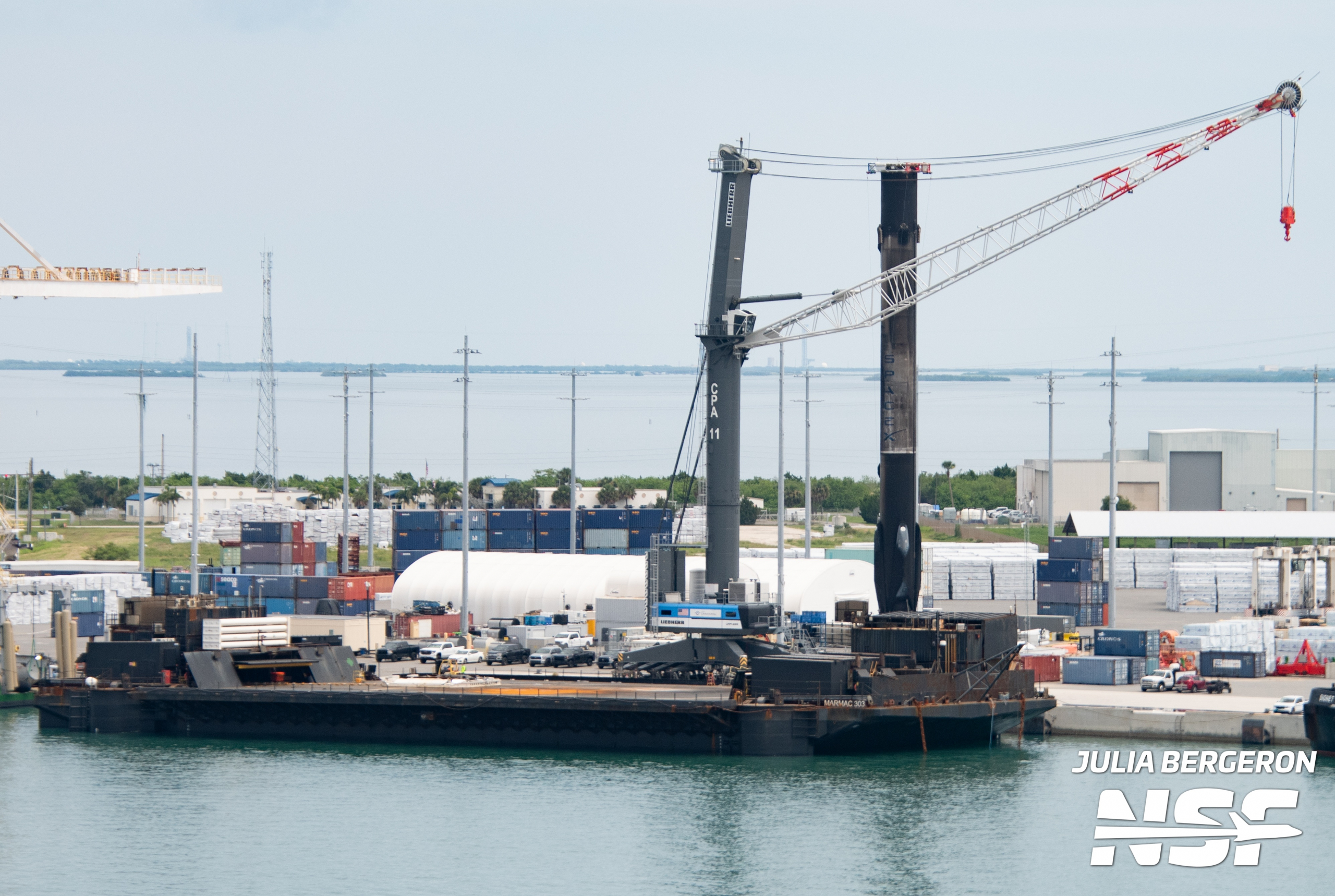
Falcon 9 B1076 at Port Canaveral after the Turksat-6A mission. (Credit: Julia Bergeron for NSF/L2)
The northern extension of HangarX2 is to house the manufacturing and production of Starship’s heat shields. It is known internally as “the bakery.” It will likely replace the Cidco Road facility used for this purpose, as SpaceX consolidates its operations on Roberts Road. This consolidation and expansion will be facilitated by a recent FONSI grant following an environmental review.
SpaceX’s maritime fleet is completely grounded due to the recent grounding, while B1076 was seen in an upright position after the Turksat-6A mission. This downtime means that routine maintenance is likely underway to prepare the fleet for the resumption of Falcon 9 flights in the not-too-distant future.
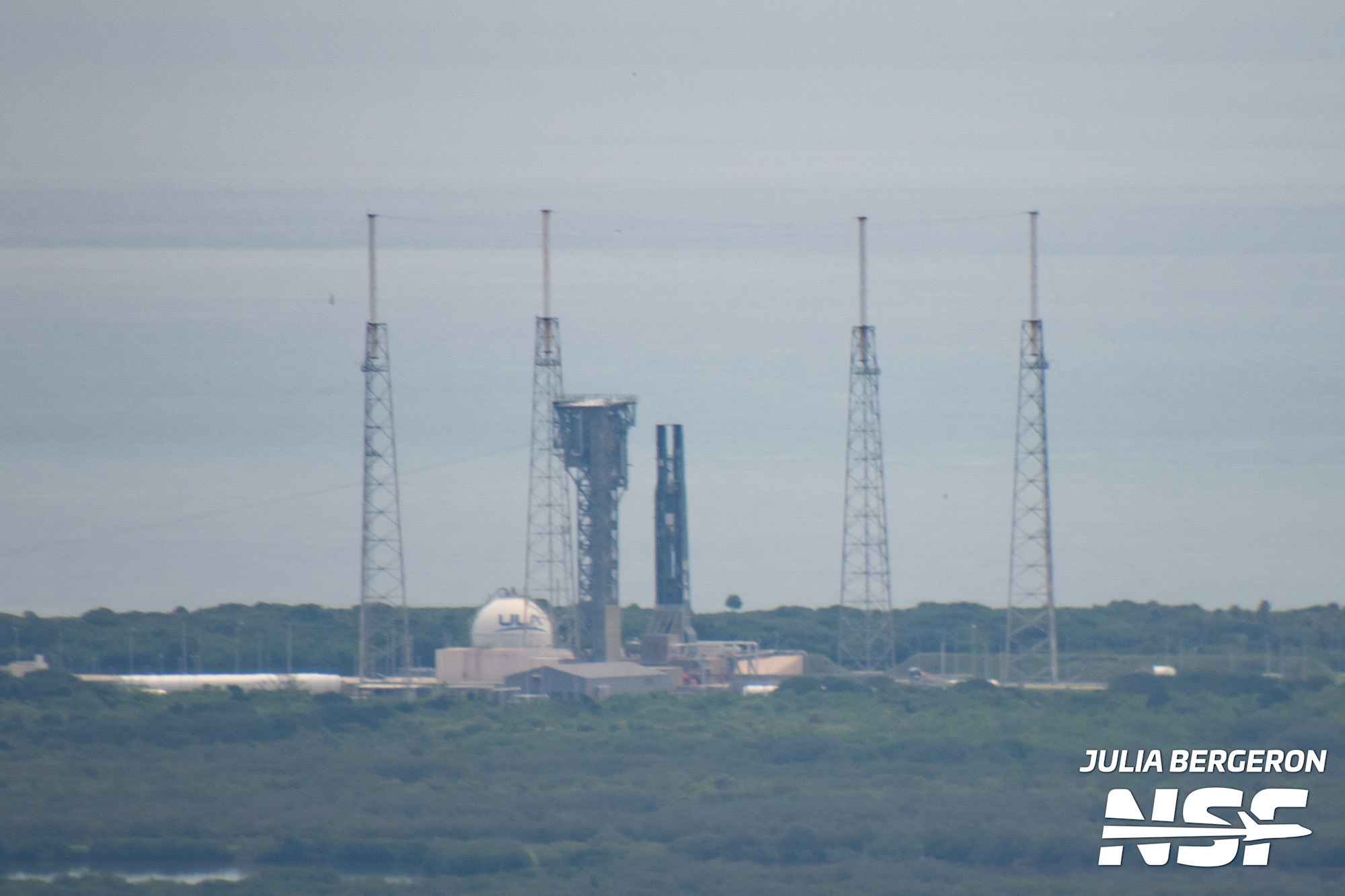
Shown here is Platform 41 with a mobile launcher, likely for Vulcan. (Credit: Julia Bergeron for NSF/L2)
ULA, Relativity and others
A Mobile Launch Vehicle (MLV) has been spotted on Pad 41. It is believed that this ML may be for the United Launch Alliance Vulcan vehicle, while the ML used by the Atlas V is likely inside the Vehicle Integration Facility in preparation for the USSF-51 flight. USSF-51 is scheduled to fly Tuesday, July 30, aboard an Atlas V 551 rocket. ULA’s Spaceflight Processing and Operations Center is also working to increase its vertical space.
Relativity continues to work on converting Launch Complex 16, which will now house the Terran 1 vehicle, which flew once in a failed attempt to reach orbit, into a partially reusable Terran R rocket. Cranes appear to be working on the foundations of the new launch pad.
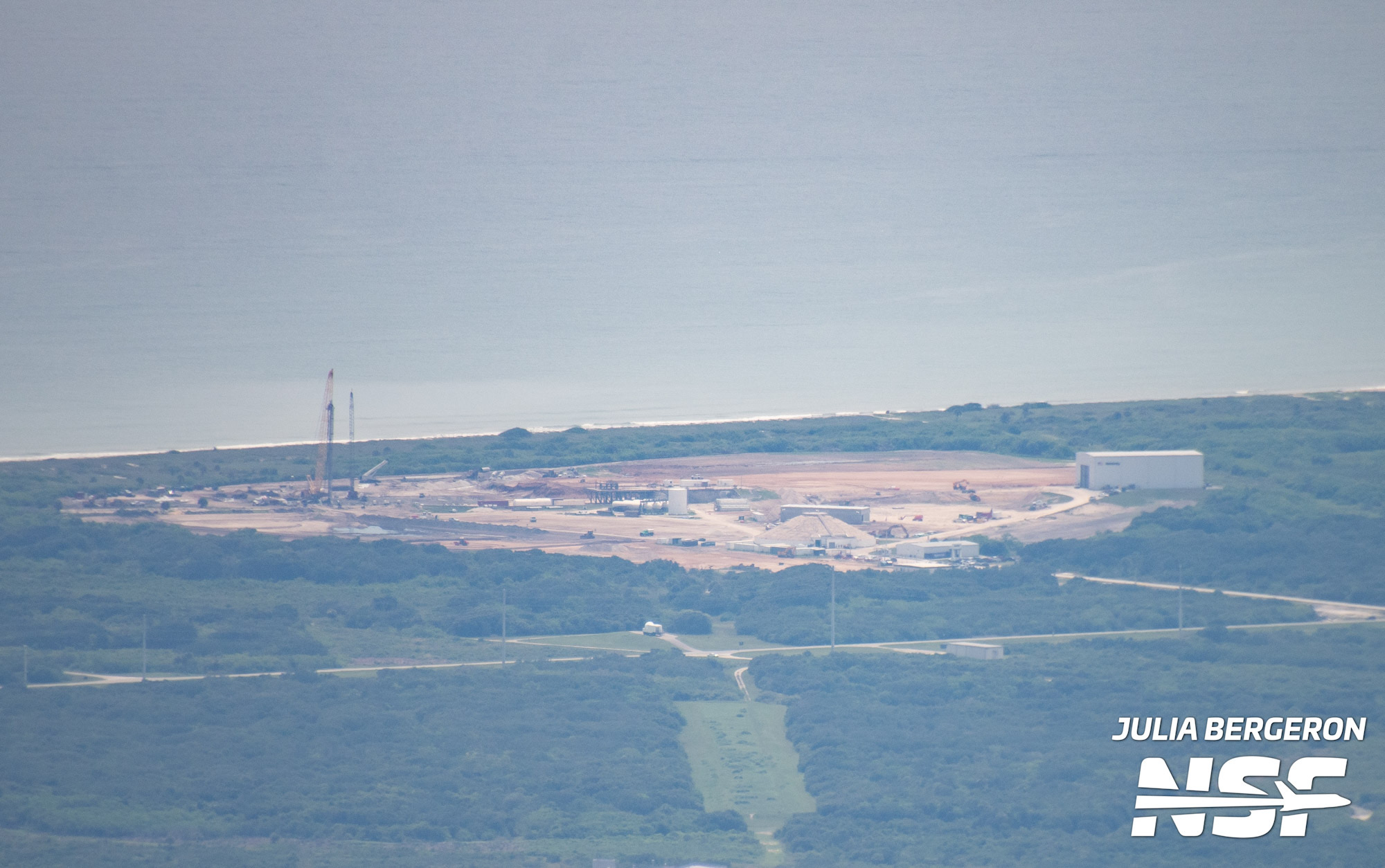
Relativity’s work on LC-16 is shown here from the flyby. (Credit: Julia Bergeron for NSF/L2)
The Airbus OneWeb facility at Exploration Park has seen significant progress in its expansion since the NSF’s last flyby. Most of the new walls are now in place for the 45,000-square-foot expansion project, and preparations for the roof addition are underway.
At the launch and landing facility, the Amazon Kuiper Payload Processing Facility has progressed and appears to be much more complete. Many of the overhead cranes seen earlier now appear to have been moved into the building, which spans over 100,000 square feet and will handle processing and encapsulation before the Kuiper satellite is launched.
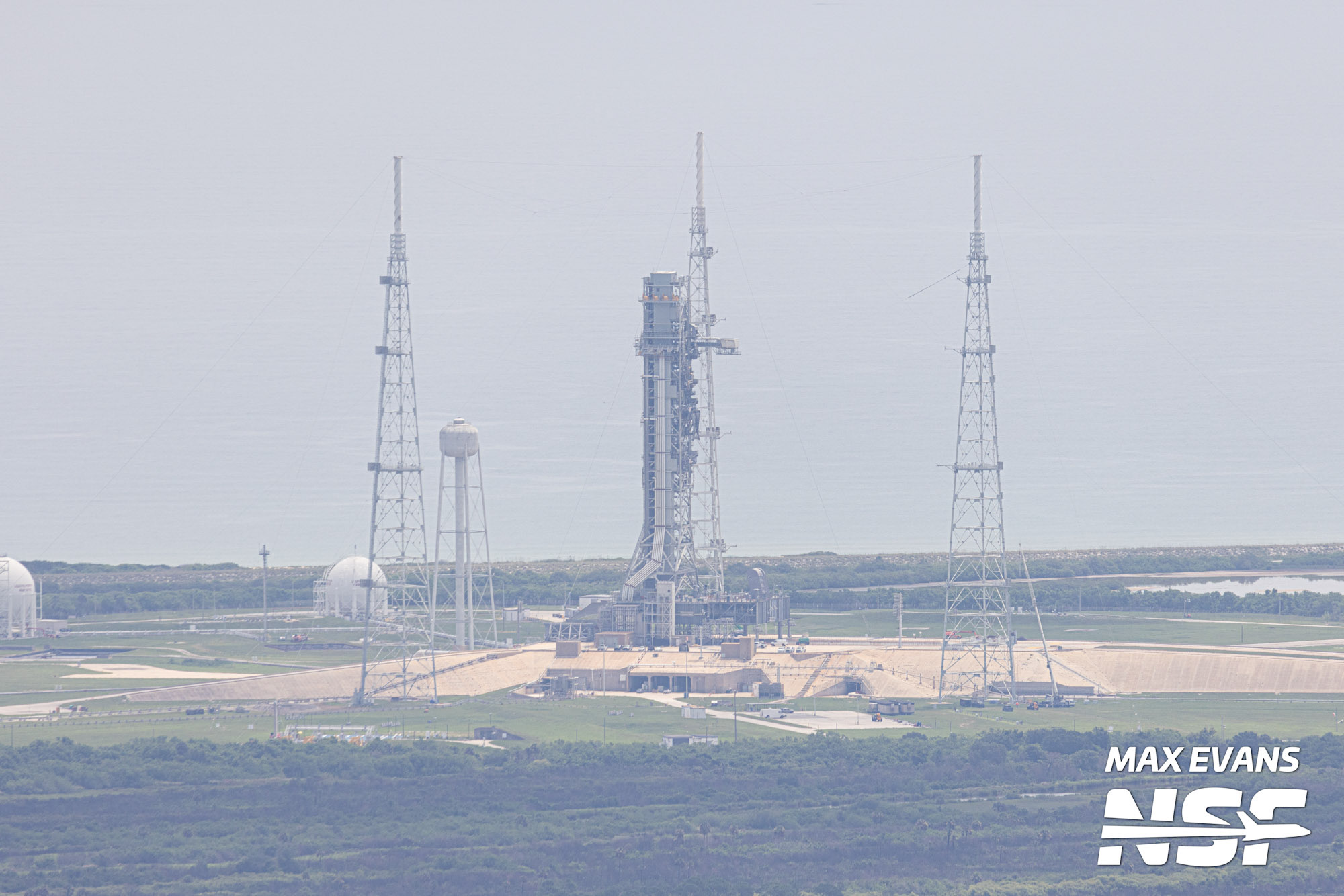
Platform 39B with the SLS Block 1 ML-1 mobile launcher undergoing testing for the Artemis II flight. (Credit: Max Evans for NSF/L2)
Finally, preparations continue for Artemis II, the first manned flight near the Moon since December 1972, scheduled for September next year at the earliest. The mobile launch platform for that flight is being tested on Pad 39B, while the second mobile launch platform, for SLS Block 1B, has been given more steel and scaffolding at its base. Plumbing can also be seen being put in place next to the platform before it is installed on the pad.
(Main image: Blue Origin launch pad at LC-36. Credit: Max Evans for NSF/L2)